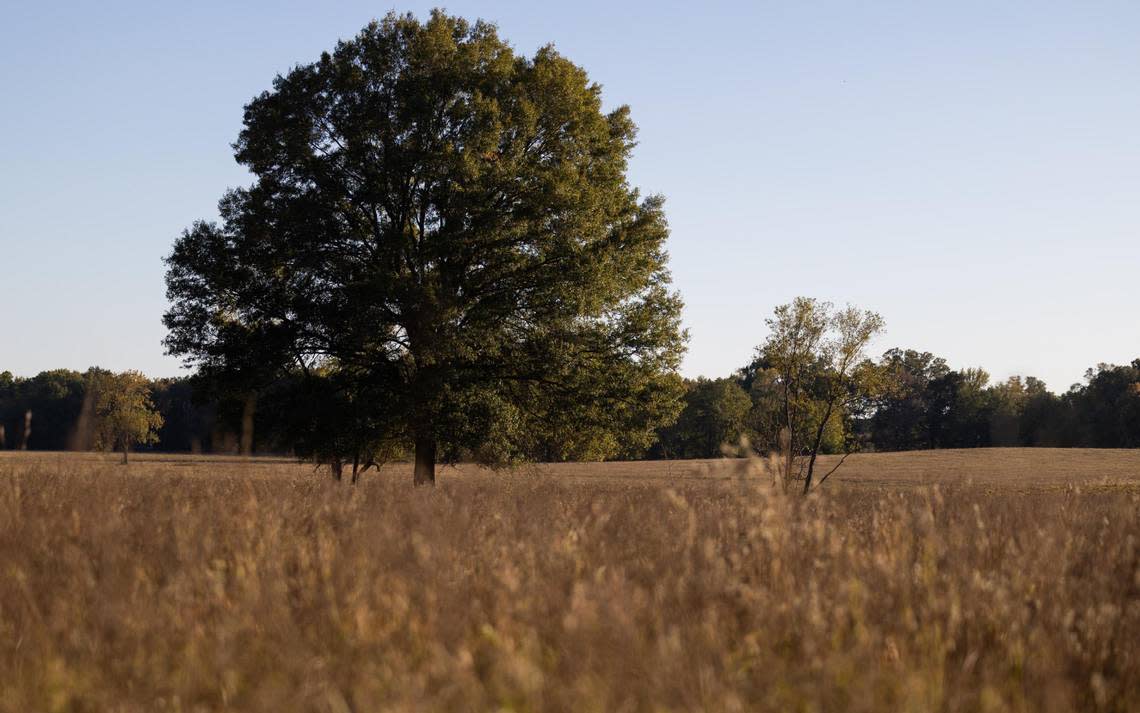Will DFW’s thirst flood ‘Texas rainforest’? Inside the fight over Marvin Nichols Reservoir
After parking his white Ford pickup truck in a pasture of knee-high grass, Jim Marshall trudges toward it: a post oak tree with branches so long they bend toward the ground and nearly meet the grass on either side.
Marshall shields his eyes from the afternoon sun and stops under the tree’s shade. He points to a hefty bough cradling a nest as big as an armchair. A family of bald eagles made its home here, in the middle of Marshall’s 917 acres.
He bends down and picks up an eagle feather.
Even though his 7-year-old granddaughter collects feathers, he doesn’t pocket it. It is illegal to possess or use the parts of the federally protected eagles.
If water planners in Dallas-Fort Worth get their wish, this massive oak will wither into skeletal driftwood in the middle of Marvin Nichols Lake.
Since the turn of the century, DFW water planners have been clear: North Texans are going to need a lot of water in the coming decades, and one way to get it is by building a reservoir about 150 miles away.
The project’s would-be sponsors — North Texas Municipal Water District, Tarrant Regional Water District and Upper Trinity Water Regional Water District — point to DFW’s explosive growth when explaining the need for Marvin Nichols.
“We’ve got 55,000 people moving to our service area every year. That equates to a nice-sized city. None of them are bringing their own water,” said Wayne Larson, director of communications at North Texas Municipal Water District.
Texas is split into 16 water regions. Each is required to devise a plan to meet its evolving water needs every five years. By 2070, the population of Region C, which includes Dallas-Fort Worth, is expected to surpass 14.6 million, according to the region’s 2021 water plan.
The water plan projects that, with current water supply, the region will have a shortage of more than 423 billion gallons per year by 2070.
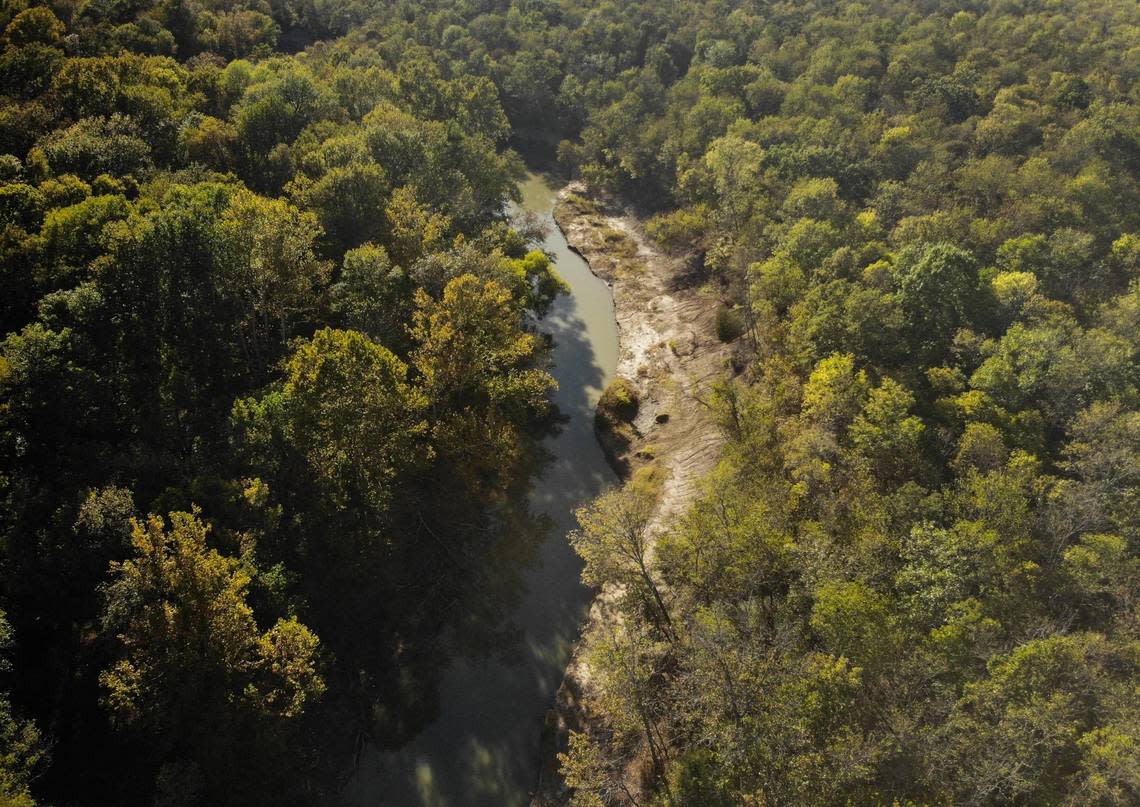
The prospect of a parched and crowded Metroplex has planners looking east: to the swampy forest of Cuthand, an unincorporated town of about 300 in Red River County.
The Marvin Nichols Reservoir project would dam up the Sulphur River, which stretches 175 miles from the western tendrils of Wright Patman Lake near the Texas-Arkansas border. The lake would span 66,000 acres. The project also includes the construction of a pipe to connect the water source to the Metroplex.
Since Marvin Nichols was first publicized in 2001, those living in Cuthand and surrounding towns have campaigned to get the project removed from the state water plan.
The fierce opposition has stretched into a war of attrition with wins and losses on each side and no clear end in sight — that is, until the state’s 2021 water plan pushed up the project’s anticipated completion date by 20 years from 2070 to 2050. Opponents took this news as an indication that the DFW water planning region would soon move forward.
Asked why the plan has remained in the water plan in light of such heated opposition, the North Texas Municipal Water District downplayed the certainty of the project.
“First and foremost, this is one of 25 potential projects in the Region C [DFW] water plan. It’s not ‘the’ water project,” said Larson.
From 150 miles away, most of Dallas-Fort Worth wouldn’t notice the loss of Cuthand, which is too small even for census data. But to the tight-knit community that’s ranched this land and passed it down from generation to generation for more than a century, Marvin Nichols would drown history, industry and, perhaps most important, rare and valuable Texas forest.
“If you have an objection to cutting the rainforests down, this is the same thing. This is the Texas rainforest,” said Brittanie Lowery, whose family owns a timber mill.
Save our Sulphur (River)
In crisp denim, a plaid shirt and work boots, Marshall looks like he belongs in Cuthand, but he’s a relative newcomer to this town and its fight.
A pediatric critical care physician at Cook Children’s Hospital in Fort Worth, Marshall dreamed of retiring on a ranch. He and his wife found their dream ranch along the Sulphur River about seven years ago.
They knew about the Marvin Nichols project when they purchased the 917-acre plot but decided it was worth the risk.
“Being a critical care specialist who’s resuscitated a lot of children, I can tell you, there’s always hope,” he said.
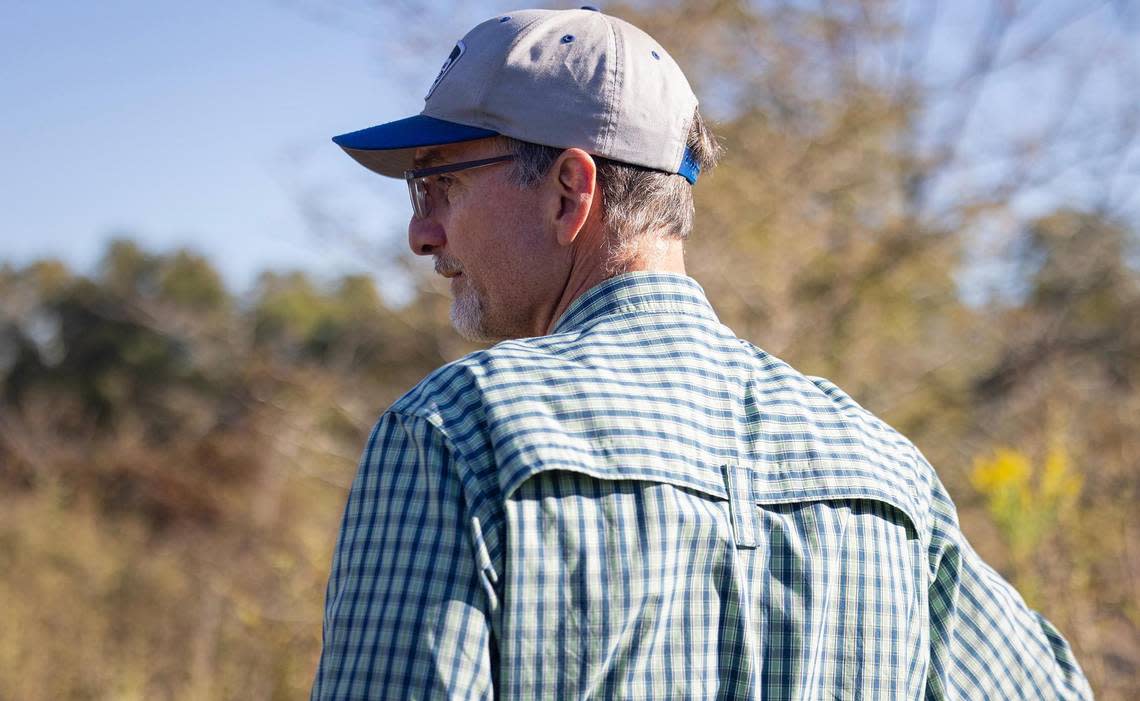
Marshall has hope, because opponents of the Marvin Nichols reservoir project have fought tirelessly for more than 20 years.
The story of the campaign started in 2001 when Janice Bezanson of the Texas Conservation Alliance was invited to a meeting in Cuthand about a new reservoir. Landowners had been told the project was a done deal, Bezanson recalled.
“The reaction was dramatic,” said Bezanson. “People just couldn’t believe it, that they could just come and take their land and force them off of it, drown it and say we’re going to use it.”
When Bezanson came on the scene, opponents had already formed “SOS” or Save Our Sulphur. With her assistance, the group hosted town hall meetings across the region, connected with the media, bent the ear of the local water planning group, bused people to Dallas City Council meetings and even sent the campaign to Austin.
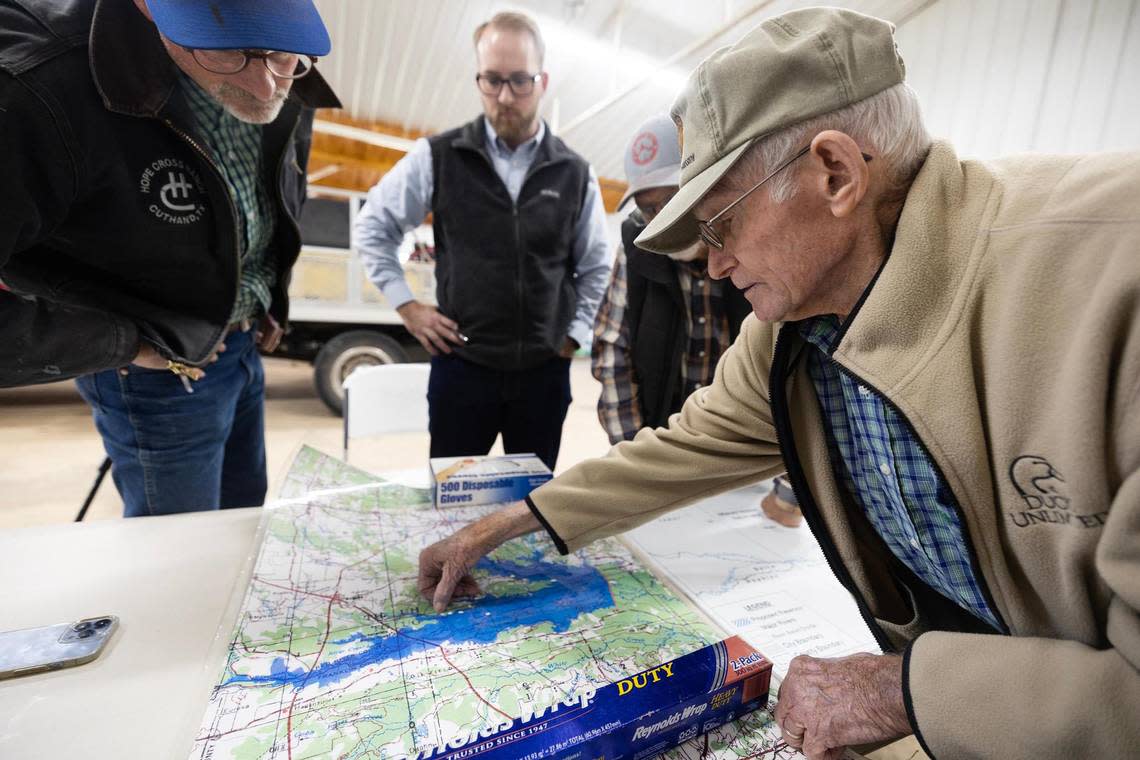
The DFW region included Marvin Nichols in its 2016 water plan; the Northeast Texas region — where the reservoir would be located — did not include the reservoir in its water plan. An appellate judge ruled this constitutes a “conflict” the state water board must mediate and sent both regional water planning groups back to the drawing board.
After multiple contentious meetings, the DFW region agreed to push the Marvin Nichols completion date to 2070 in its 2016 water plan and agreed not to file any permits before the 2021 water plan.
But, the shaky detente was short-lived.
In the 2021 water plan, the DFW region reversed its previously agreed-to position and moved up the date of expected completion to 2050. In response, opponents launched “Preserve Northeast Texas” in June 2021.
“Over 20 years later, and they still have not applied for a permit for this reservoir, and the reason is because of the tremendous opposition to this,” said Bezanson.
‘The best wildlife habitat’
At 82, Gary Cheatwood became the poster child for the fight against the Marvin Nichols reservoir.
His love for his family land is legendary in Cuthand, so as part of its educational campaign, Preserve Northeast Texas used a photo of Cheatwood leaning against the thick trunk of a water oak tree. One hand rests casually against his thigh. The other is tenderly placed against the tree, as if he knows it well.
Out of the frame about 100 yards away stands a box house constructed from native short leaf pine. Gary Cheatwood was born in the house.
When she first met Cheatwood more than 20 years ago, Janice Bezanson asked him what he does for fun.
“I guess the Sulphur River is my hobby,” he said in his soft East Texan drawl.
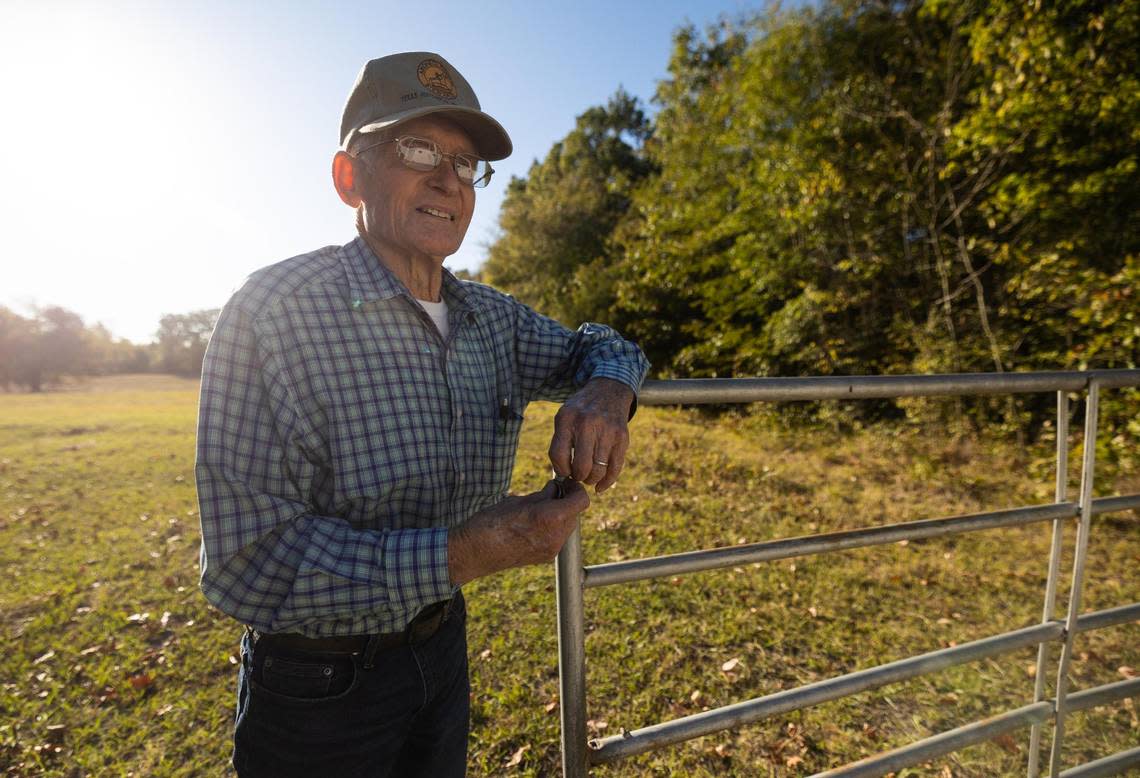
Cuthand is in what’s known as bottomland hardwood forest, which is basically a forested swamp.
“Even if they’re not fully residing in that bottomland hardwood, that’s usually where most of your wildlife uses to travel,” said Kelby Wolf, district forester with the Texas A&M Forest Service.
For Cheatwood, this slice of the Sulphur River is a subject of lifelong study, a uniquely peaceful spot for recreation and a trove of priceless historical treasures.
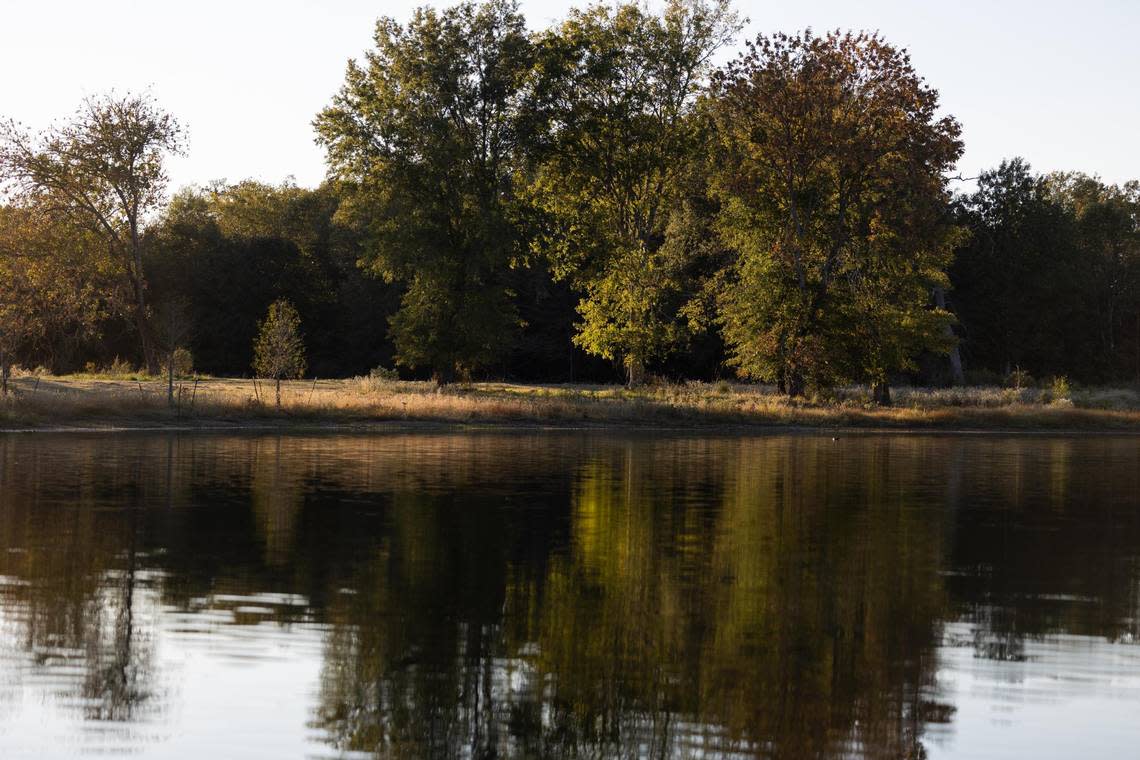
On the banks of the river, he identifies birds, otters, beavers, turtles, bobcats and snakes. He’s particularly proud of his collection of mussels, a variety of which thrive in the Sulphur River.
This ecoregion once thrived in the Southeast, but, since the late 1800s, has been decimated by development.
“It’s the best wildlife habitat that we have,” said Wolf.
Despite their love for the land, the folks who oppose the construction of the Marvin Nichols reservoir aren’t your average conservationists. The group is composed of cattle ranchers, farmers and timber processors.
But, when Bezanson approached the campaign from the perspective of traditional conservation, she and the residents of Cutland were easily able to see eye to eye.
“They are natural conservationists,” she said. “They live on the land. They just didn’t think of it as something you join an organization to do.”
Take Jim Marshall, for example.
He’s an environmentalist who can serve up a burger made from one of his cows while lovingly describing her as if she were a beloved member of the family.
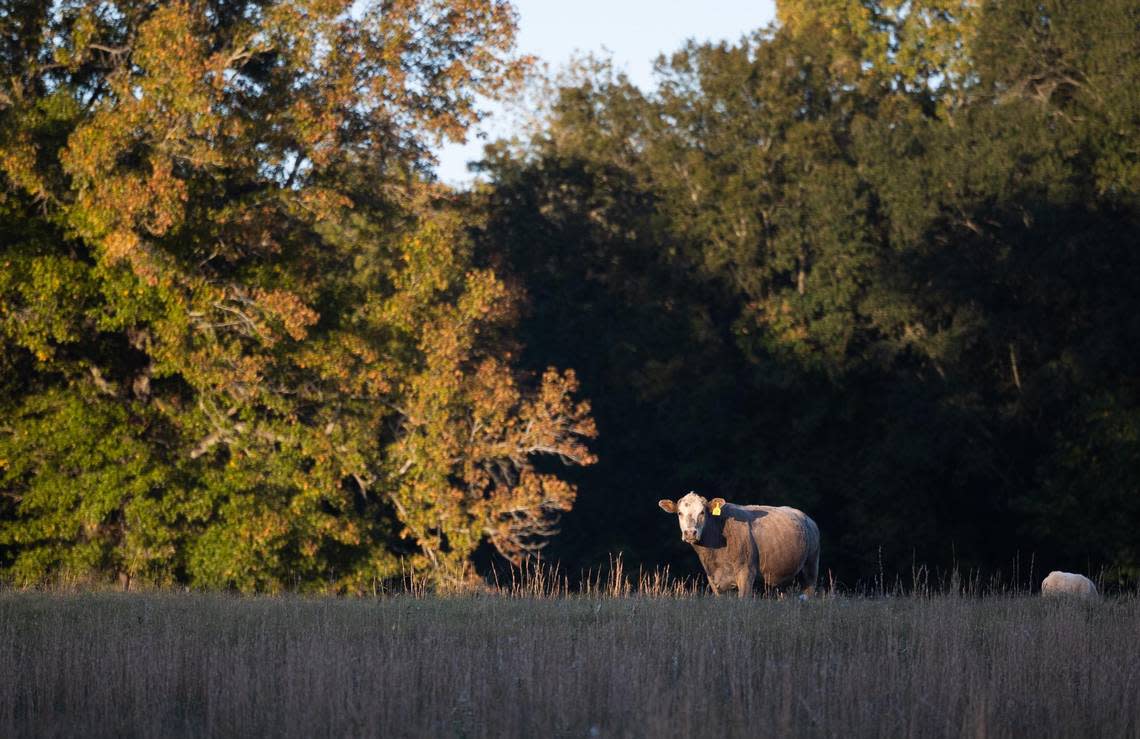
When preparing his ranch, Marshall paid special attention to preserving wetlands and the wildlife on his property.
For example, he practices rotational grazing, so his cattle never enter the watershed.
“The national government’s not interested in doing the wetlands preservation because they expect this lake to go up, so we started on our own wetland mitigation projects ourselves out of our own pocket,” said Marshall.
Economic boon?
About 100 miles northeast of DFW in Fannin County, a similar project is playing out about 25 years ahead of Marvin Nichols, albeit on a smaller scale.
In 2022, Texas welcomed its first reservoir in nearly 30 years: Bois d’Arc Lake.
The 16,641-acre water supply reservoir isn’t yet open to the public, but it’s already being hailed as an economic driver and an exciting new recreational option for North Texans.
For recreation enthusiasts, the lake has three boat docks and will be home to Florida bass available for fishing. North Texas Municipal Water District projects the lake will create more than 2,400 jobs in Fannin County.
“Most real estate people would say it’s a pure win,” said Bruce Roberts, broker and owner of Bois d’Arc Realty, which primarily sells land.
A similar economic boon has been promised to the residents of Cuthand when recreational opportunities boost property values and attract new businesses and out-of-towners.
But, any economic growth caused by Marvin Nichols will be offset to some extent by the reservoir’s effect on the timber industry, like Ward Timber in Linden.
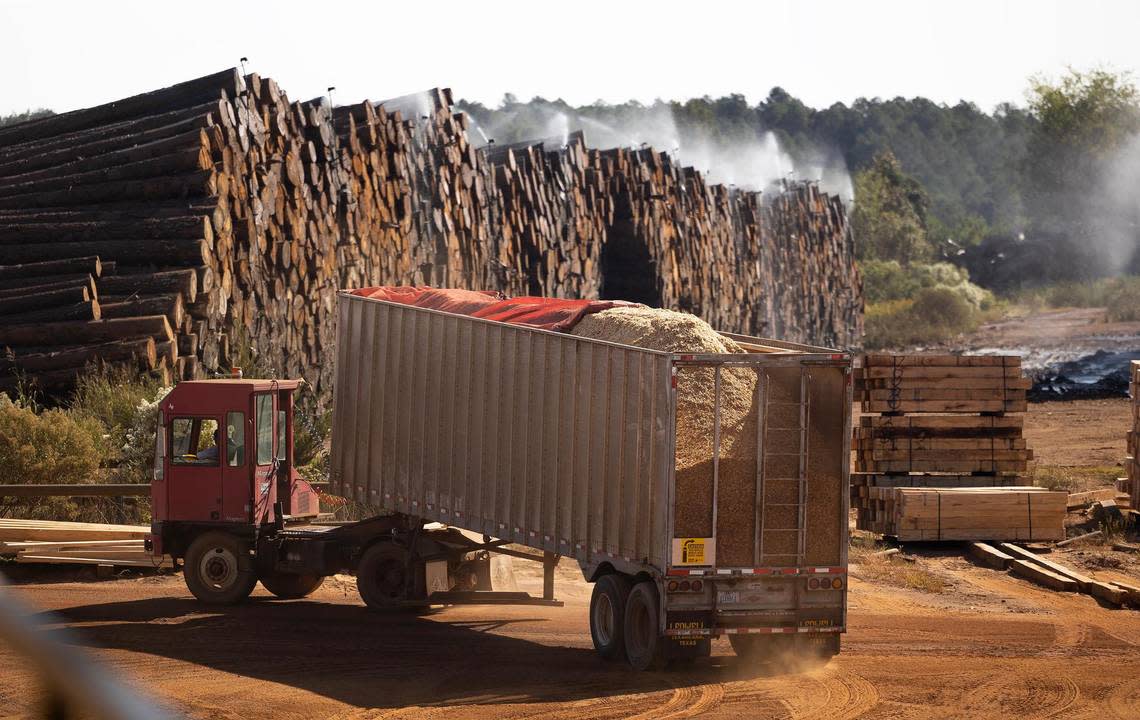
From the nearly two-story piles of pine and hardwood logs at the entrance of the mill, Ward makes hardwood flooring, railroad ties, molding, pallet wood, wood chips and sawdust.
Some of this wood can be found in new Dallas-Fort Worth neighborhoods — the very growth used to justify the Marvin Nichols project.
Bill Ward and John Jones opened Ward Timber’s Linden mill in 1999. Today, Ward’s daughter Brittanie and her husband Bret Lowery work there.
“We have kids and would love for this to stay in the family. It’ll be something that our kids someday could run,” said Bret Lowery.
Ward Timber employs about 120 people, but taking this valuable land out of production wouldn’t just affect the mills.
“It’s all the services that support that,” said Bezanson. “It’s the bankers, the feedlot, the restaurants where everybody goes to eat, the gasoline where they buy the gas for their logging trucks. There are paper mills, timber mills and lumber mills in the region that employ a lot of people.”
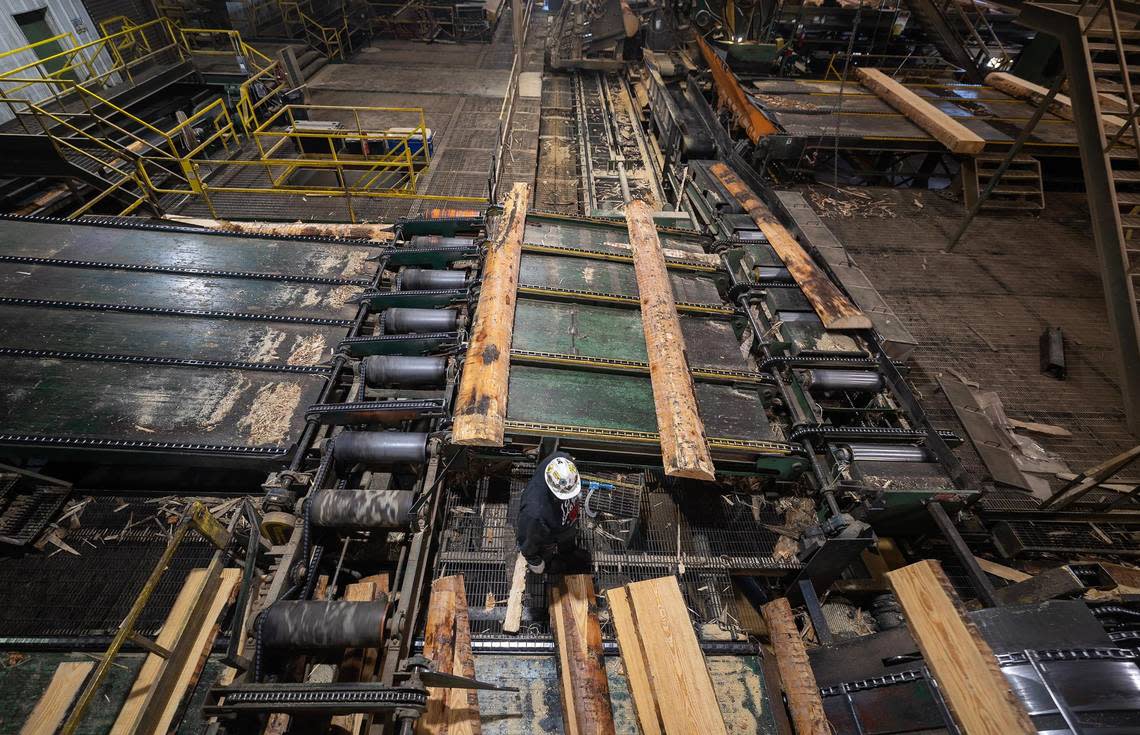
Locals are also concerned the project will economically squeeze the area by reducing the property tax dollars and state funds available to the school district.
Marvin Nichols reservoir would sit in the middle of Rivercrest school district, which was created in 1965 and serves about 700 students.
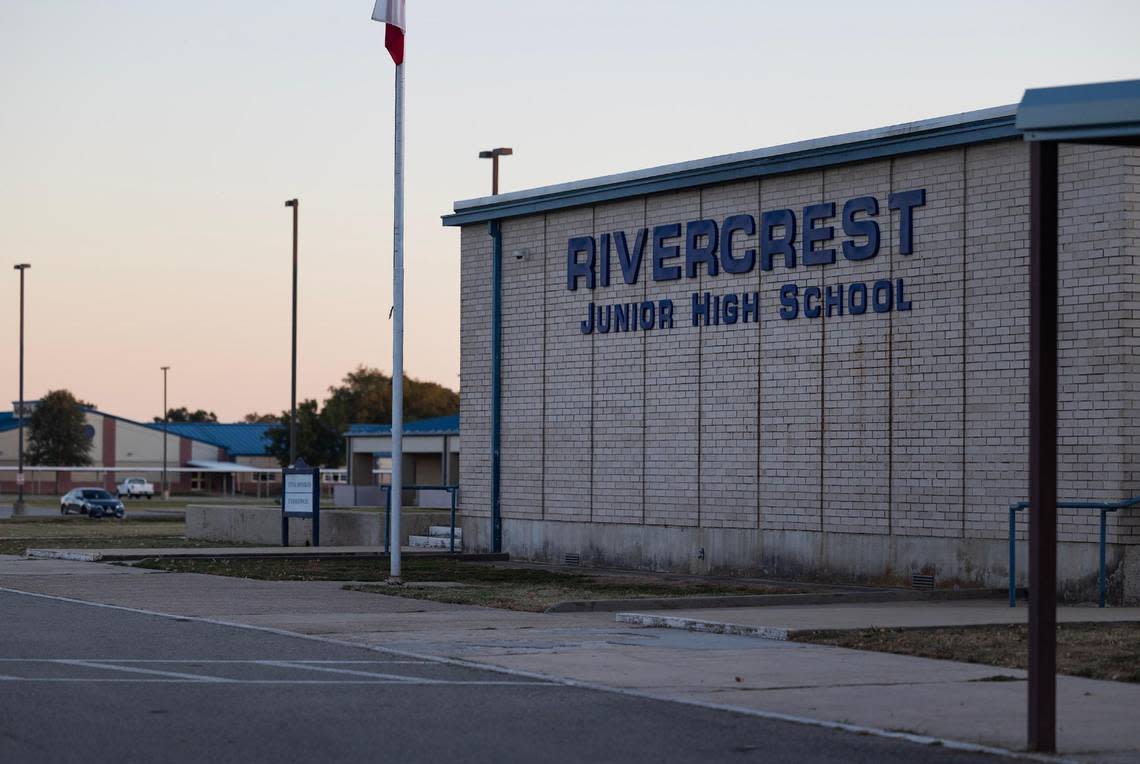
Like other Texas school districts, Rivercrest is funded in large part through property taxes. Displacing Rivercrest taxpayers and flooding their land will decrease the money coming into the district, said Stanley Jessee, a district’s superintendent who retired in 2022.
He also predicts state funding, which is based on enrollment, is expected to decrease when property owners are displaced as the reservoir is built.
“We’re a rural district. Our kids are rural kids, but we’re able to offer some top-notch programs to our kids to get them ready for career or for college. I feel like we’re a shining star in the state,” Jessee said.
Alternative water sources
At the heart of the campaign against Marvin Nichols is a contentious belief: Dallas-Fort Worth doesn’t actually need the water that Marvin Nichols would provide.
Firstly, Dallas and Fort Worth aren’t conserving as much water as other Texas cities, said Bezanson.
In their water conservation plans, each Texas city lists its annual rate of water consumption per capita. These were the five-year average consumption rates for each major city in 2019:
Dallas: 181.8 gallons per capita per day
Fort Worth: 159
Houston: 129
Austin: 126
San Antonio: 118
In 2004, the Texas Water Development Board recommended to the Texas Legislature a reduction in water usage to 140 gallons per capita or below. Austin used this recommendation as a guidepost for reducing water consumption in its “140 Plan.”
Nearly 20 years later, only Dallas and Fort Worth have failed to meet that threshold.
It’s not for lack of trying, said Larson from North Texas Municipal Water District. And, to be fair, these figures represent a reduction from previous usage metrics in Dallas and Fort Worth.
The district works with the city of Dallas and the Tarrant Regional Water District to educate the public, including new North Texans. In 2016, the entities launched “Water is Awesome,” a campaign encouraging North Texans to be more efficient with their water use.
“We’re constantly putting out public education when it comes to being good stewards of water both inside the home and outside the home,” said Larson.
The district also identifies its largest water users and works with those customers to reduce water usage.
But, is this effort enough to justify the disruption this massive project will cause? Bezanson says no.
“We’re talking about taking people’s land,” said Bezanson. “We’re talking about taking their homes. We’re talking about splitting their school districts in two. We’re talking about devastating their industrial and economic base. So people in the DFW area can water their lawns.”
Opponents of the project also say the water Marvin Nichols would provide could come from other preexisting sources of surface water.
For example, the Toledo Bend Reservoir at the Texas-Louisiana border spans 185,000 acres and is the fifth-largest man-made lake in the country. While using this water would require building a long pipeline, the reservoir itself is already constructed. In the 2021 Region C water plan, the Toledo Bend Reservoir is listed as a water supply strategy to be evaluated.
What’s next?
To move forward with building the Marvin Nichols reservoir, the utilities sponsoring the project next must file a water rights permit with the state and a federal permit pertaining to watershed disruption, said Bezanson.
Both permitting processes give opponents opportunities to make their feelings known. Both processes also require extensive surveying of the project’s impacts.
So far, the builders of Marvin Nichols haven’t filed any permits to initiate the building process. When asked if the North Texas Municipal Water District (the lead on the project) plans to file permits for Marvin Nichols before the next water plan is released, Larson said all utilities involved need to update their Long Range Water Supply plans before a timeline can be determined.
Meanwhile, Preserve Northeast Texas is focused on educating Texas leaders about alternative water options.
However, without an easily discernible timeline, veterans in the fight against Marvin Nichols worry their supporters could lose steam or lose interest.
“People just get tired of hearing about it. Eventually they just get worn down. And, I think that’s what they’re trying to do. They’re trying to wear the people out,” said Brittany Lowery.
But, if the last two decades is any indication, the fight will continue to evolve. After all, for residents of Cuthand, the stakes couldn’t be higher.
“We’re blessed to live here,” said Stanley Jessee, the former superintendent. “To be able to experience this. When Marvin Nichols comes, this is underwater. All of this is gone.”
